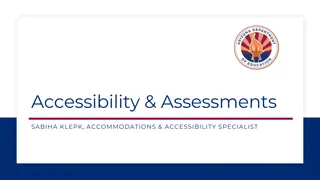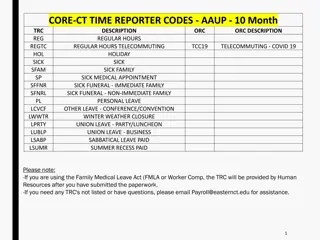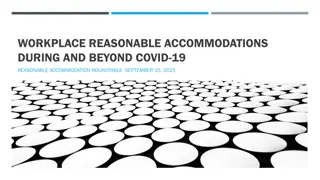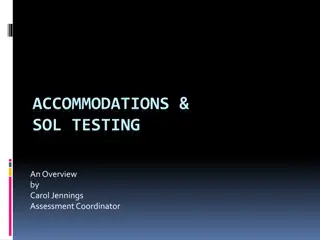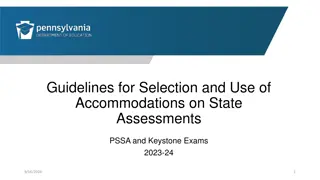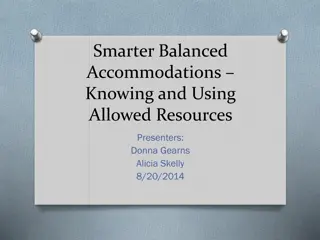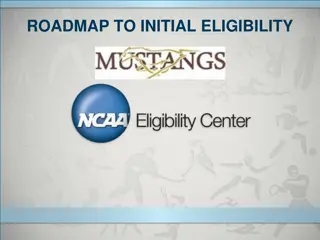Understanding Telecommuting: Policies, Accommodations, and Eligibility
Explore the world of telecommuting, including types of arrangements such as intermittent, short-term, and long-term telecommuting. Learn about the eligibility criteria, workspace requirements, and safety certifications needed for employees to engage in telecommuting. Discover the differences between ADA accommodations and informal accommodations in a work setting.
Download Presentation

Please find below an Image/Link to download the presentation.
The content on the website is provided AS IS for your information and personal use only. It may not be sold, licensed, or shared on other websites without obtaining consent from the author. Download presentation by click this link. If you encounter any issues during the download, it is possible that the publisher has removed the file from their server.
E N D
Presentation Transcript
Employee Accommodations, Telecommute & Flex Work
ADA Accommodations vs. Informal Accommodations?
Telecommuting Governed by UW Administrative Policy 1228 An employment arrangement in which an employee performs their job functions from an approved alternate worksite other than the employee s primary headquarters location (main office), one or more days per month on a standard and recurring basis. Telecommute
Types of Telecommute Intermittent Telecommuting: An unplanned period of telecommuting arising out of transient circumstances (e.g. illness, weather emergency, temporary school closure, etc.) lasting no longer than ten consecutive business days. Short-Term Telecommuting: A continuous period of part-time or full-time telecommuting lasting no longer than three months. Long-Term Telecommuting: A continuous arrangement for part-time or full-time telecommuting subject to at least annual review.
Only employees whose job duties can be fulfilled from a remote location are eligible for a telecommuting agreement. Telecommuting is only available if the work unit and institution have the ability to monitor or measure the work product produced by the employee during the period of telecommuting. Telecommuting is only available to employees who have all tools required for their job available to them at the remote location, as determined by the employee s supervisor. Working space, insurance, utilities, and other services for the remote workspace must be provided by the employee at their own expense as a condition of the telecommuting agreement. Prior to beginning a telecommuting arrangement, the employee must certify to the employer that their remote workspace meets minimum safety requirements. Eligibility











